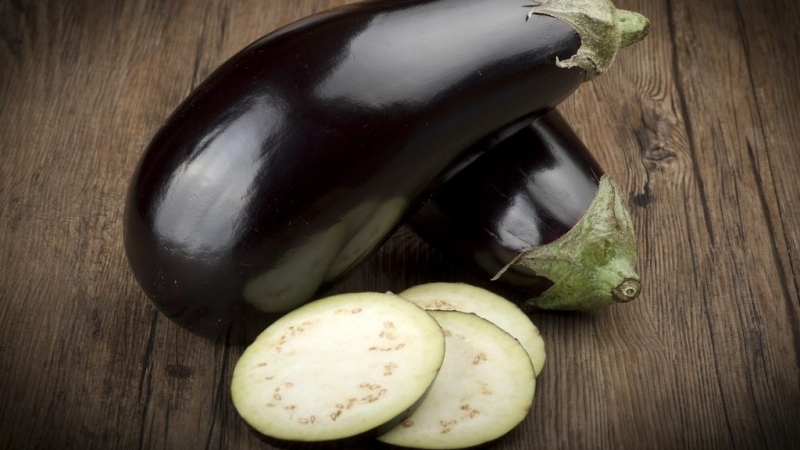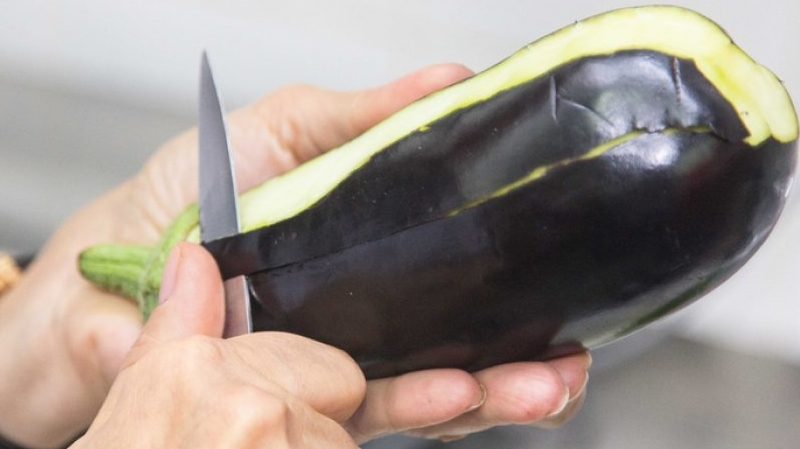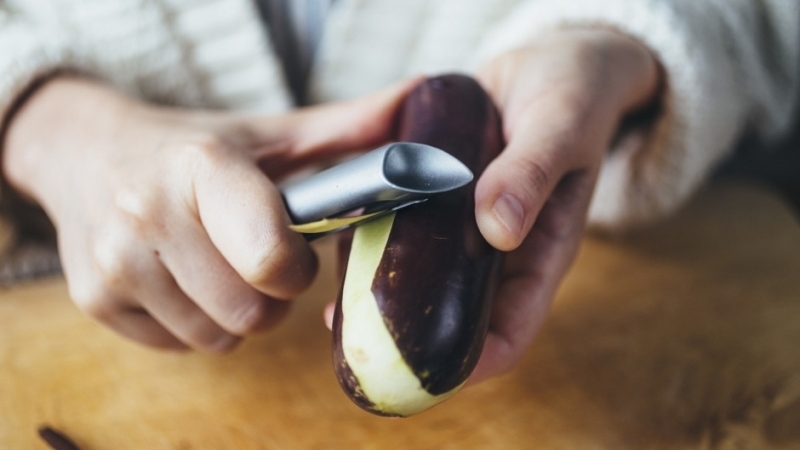Do I need to peel eggplants and how to do it correctly
Eggplants can be used to prepare delicious and original dishes, use them as one of the ingredients in recipes of various cuisines. However, in addition to its taste, this vegetable is also appreciated for its invaluable benefits for the body. Doctors recommend eggplant for dietary nutrition. They have a positive effect on the functioning of the digestive system, remove cholesterol, and normalize weight. And "blue" are useful for bones, skin and hair, nervous, circulatory, cardiovascular and genitourinary systems.
The content of the article
To clean or not
The novice housewife, having bought the "blue" ones, wonders whether it is necessary to peel the eggplants or cook them with the skin. What if such a procedure will deprive the vegetable of most of its beneficial properties? Let's figure it out.
When it is necessary
For dishes with eggplants, in which the consistency should be uniform, vegetables are always peeled, and if necessary, they also remove the core with seeds (if the fruit is old). Old fruit seeds spoil the dish, especially when stewing. Stews, mashed potatoes, caviar and stewed eggplants require a delicate consistency - both separately and together with other vegetables.
When you don't need to clean
In some dishes, "blue" ones have to keep their shape after cooking. It is the skin that helps to maintain the appearance of the finished product. Eggplants are also left with the skin and seeds, or partially peeled when you want them to add a pungent spice to the taste. These include baked, fried, stuffed and grilled eggplant and vegetable rolls.
Getting rid of bitterness
When, according to a recipe, the skin of a vegetable needs to be preserved, but there is a risk that it will taste bitter, eggplants require pre-processing. After washing, they are dried, cut into circles or cubes and soaked in salted water (1 l / 2 tbsp. L.) For 25-30 minutes... You can also soak in fresh milk, under a small press, also for half an hour. The whole fruit will have to be soaked for at least two hours. Then the eggplant is washed with clean water. The vegetable can now be cooked without being bitter.
By the way! Did you know that it is not the eggplant peel that tastes more bitter, but its pulp or seeds? That is why, in order to remove it, the vegetable is cut before soaking.
Not harmful with the peel
The peel of a high-quality vegetable that is not overloaded with nitrates will not harm the body. Therefore, the question as to whether it is possible to eat it with the skin is not worth it. On the contrary, the skin contains a maximum of nutrients.... However, sometimes you still need to get rid of the skin.
So, the peel is always peeled if the eggplant is not young: in old fruits, the skin is tough, and there will be more bitterness. If vegetables are used for dietetic nutrition or in children's dishes, it is better to remove the skin as well. This is especially true when you buy vegetables grown on large farms and do not know if nitrates were used and in what quantities. If there is a suspicion that the fruit was grown using chemicals, it is better to get rid of the skin, as it tends to accumulate harmful toxins.
How to peel eggplant
If a recipe requires peeling, or if you prefer a peeled vegetable yourself, there are several ways to do it. There are three types of cleaning:
- Complete.
- Partial.
- After cooking.
Before cooking, the vegetable is washed well under running water, the base of the stem and the lower part are always removed - they are tough and bitter.They are cut regardless of the method of cleaning and the age of the fetus.

Full
To do this, you need to remove the skin with a knife or peeler. The rind layer should not be too thick. Place the eggplant vertically on a board with a slight slope. Peel the skins in strips from top to bottom until the whole vegetable is peeled.
Partial
This type of cleaning diversifies the look and taste of the prepared meals. It allows you to preserve the benefits of the vegetable and keep its shape. The meaning of this method is that the peel is cut in the same way as in the previous case, only not completely, but in strips 2-3 cm wide. It turns out a kind of eggplant "zebra".
After cooking
The finished vegetable is cleaned after heat treatment. From the baked or scalded whole fruit, when it cools down, carefully remove a thin layer of skin with a knife, hands, fork or spoon.
Read also:
What is the danger of a spider mite on eggplant and how to effectively deal with it.
Review of the Nutcracker eggplant variety: advantages and disadvantages
Why is the Epic eggplant variety good and why it is worth growing.
To make it tasty and healthy
If you are wondering whether it is necessary to peel an eggplant, you should know that it tastes bitter not only and not so much because of the peel. The seeds give the vegetable bitterness. The pulp itself can be bitter. Solanine, contained in fruits, is responsible for this - a substance that in large quantities has a harmful effect on the body. And when frying a vegetable, it not only spoils the taste of the dish, but can also cause intoxication. Experienced housewives and cooks can always determine whether the fruit will taste bitter.
To understand whether there is a lot of solanine in the eggplant and, accordingly, whether it needs preliminary processing, it is enough to cut a small piece of the vegetable and wait half a minute. Eggplant pulp, in which there is no or very little solanine, will remain light or may acquire a slightly yellow tint. Vegetables containing a harmful substance darken at the cut, acquire a brown color.

To completely remove the bitterness, which means get rid of solanine, you need to properly process the "blue" ones:
- cut the eggplant, as required by the recipe (you can process the whole one if necessary);
- soak in salted water or milk (30 minutes for chopped fruits, two hours for whole ones);
- peel the fruit of seeds and skin (in whole or in part).
By the way! Nowadays, most types of eggplant are no longer bitter. All thanks to the breeders: they tried and bred varieties that are simply not bitter.
Conclusion
It is safe to say that a well-grown vegetable that is not overloaded with nitrates and other chemicals is healthy to eat with the peel. And whether to clean it or not is a matter of taste. Now you know how to test eggplant for solanine and get rid of the harmful and taste-spoiling substance. This will allow you to cook "blue" the way you want and as required by your favorite recipes, and not worry about the taste of the dishes and your health.
Thanks for the detailed information.